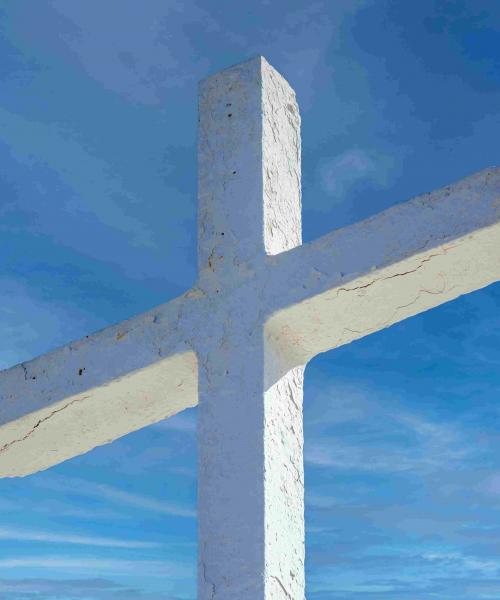
What's in a name
It’s an interesting way to start a story. The author of the Gospel of Matthew had a whole range of ideas to work with. He proposes to tell the story of the Messiah – the good news of great joy (as others have phrased it) – And this telling begins with a list of names.
Genealogy, to be specific – the bloodline of Jesus – his ‘historical’ bona fides. And I’m tempted (as you may be) to say ‘who cares?’ It’s nearly impossible to consider this list as historically accurate by current genealogical standards. Birth records in ancient times are rather hard to find - though most traditions are fierce about their connections to past greatness. And if you look hard, you can find another, completely different list of Jesus’ relatives (Luke 3:23-38, if you’re curious) which only muddies the waters.
What, then, is the point?
Well, like any good family history, Matthew’s gospel wants to ground Jesus’ story in something his audience can relate to. His audience is (mostly) Jewish – they know where they came from; they celebrate their connections to certain ‘giants’ of the faith – and they are all conspicuous here. Abraham, Isaac & Jacob. David & Solomon. These were the heavy hitters, around whom the idea of collective ‘Jewishness’ was founded.
Matthew leans on the theological premise of chosen-ness (Abraham and David – take a bow) so that none will doubt that Jesus has been called/chosen/anointed in his role as Saviour. Salvation (say the prophets- and the magi) - will come from the Jewish people; ergo Jesus has a very VERY Jewish family tree – back to the first of God’s chosen folk.)
So, a list of names - strange sounding and steeped in tradition. A list that has tempted some to do a deep dive into the Old Testament; to find connections and work out timelines. The timelines may be beyond us, but the connections are important even now.
Matthew’s list is strangely symmetrical - three groups of 14 generations - nicely arranged to cover the high points of the ‘history’ of God’s chosen folk. But if you’ve ever dabbled in a family history - you’ll realize that these lists are never straight lines; never so neat and tidy.
Each name represents a family with its own branches - with diversions and occasional dead ends. Each name stands for an endless collection of particular stories…this unique cousin; the warrior sister; the uncle whose memories of the war altered his life; the forgotten grandmother whose story no one knows.
And then there’s the mathematics of genealogy. The family connections grow exponentially with each generation - the great cloud of witnesses is evident in this three-fold list from Matthew - which, if worked out according to accepted genealogical practice (finding your parent’s parents (4) and their parents (8) and theirs (16)) would give you over 16000 names in the first thirteen generations…that’s a vast family tree, which rather affirms the promise to Abraham found in Genesis 17:4-7:
4‘As for me, this is my covenant with you: You shall be the ancestor of a multitude of nations. 5No longer shall your name be Abram, but your name shall be Abraham; for I have made you the ancestor of a multitude of nations. 6I will make you exceedingly fruitful; and I will make nations of you, and kings shall come from you. 7I will establish my covenant between me and you, and your offspring after you throughout their generations, for an everlasting covenant, to be God to you and to your offspring after you.
What for Abraham seemed impossible, the passage of time renders wonderfully accurate. Thirty-two generations (including only parents of parents) results in a nearly infinite web of interconnected names, families, and stories.
And Jesus is (according to Matthew) linked to all of it.
By virtue of his birth, Jesus is connected to everyone who ever was - and who ever will be. (John’s gospel says essentially the same thing - without the names) That’s how generational connections work - not just backwards, but forwards too - the Biblical storytellers understood this intuitively, and so this ‘list of names’ is not just the specific link to a specific history - Jesus to David to Abraham; it is a reminder of how it is possible to have all humankind included in the promises and protection of God’s loving embrace.
In Matthew’s list, Jesus is the end result. But the list continues to grow - names are added every day. Modern genealogists will tell you it only takes six generations before you begin to find common ancestors. Matthew took thirty-two generations to show that Jesus was no supernatural outsider - that he was ‘part of the family.’ That family continues to grow and change; We add new stories and continue to work out our sense of connectedness. We have even followed Matthew’s example - called Jesus ‘brother’ and following Jesus’ example, called God ‘father.’ In faith, we find that our names are part of that ever-expanding list - not some holy relic that reads list a naughty or nice list, a family tree - with many, many branches - that is the family of God.
 St. John's
St. John's




